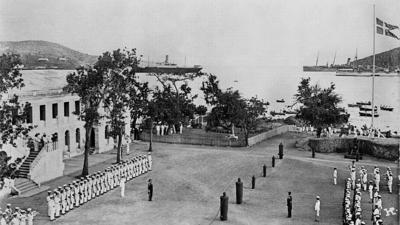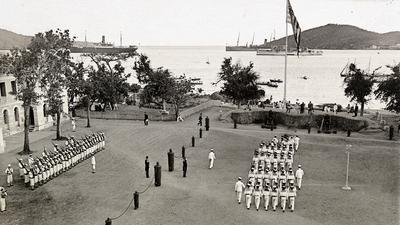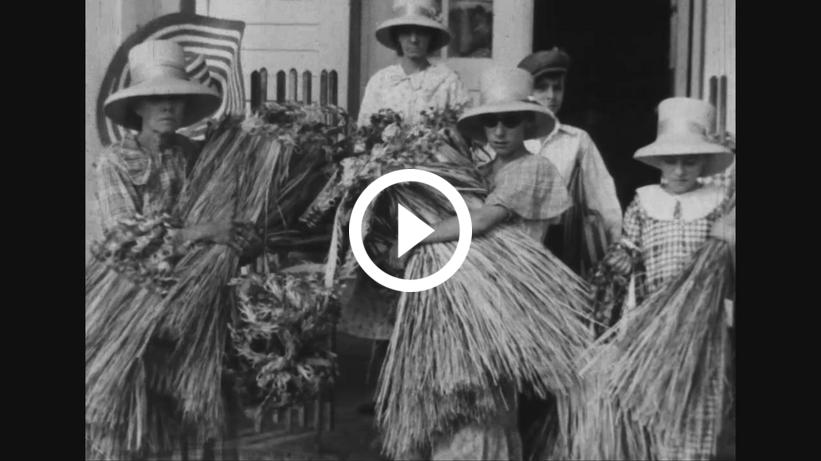
What isTransfer Day?
On March 31st 2017 it is exactly 100 years since Denmark relinquished possession of the Danish West Indies to the United States for $25 million in gold coin. This is known as Transfer Day. After the transfer, the name was changed to the U.S. Virgin Islands. The final decision to sell the islands was not made overnight: Denmark and the U.S. had been negotiating the sale since the mid 1860s.
Why Did Denmark Sell the Islands?
Denmark decided to sell the islands because the colony had been running at a loss since the mid 1800s. Whilst sugar production had increased steadily on other Caribbean islands, especially on Cuba, it was in decline in the Danish colony. New technology was incapable of reversing the decline, because the soil was simply not fertile enough. There was also fierce competition from far cheaper cane sugar from Brazil and East Asia, not to mention European beet sugar. As a result the islands had been running at a deficit for years.
Why Did the U.S. Want to Buy the Islands?
As Denmark’s economic interest in the islands waned, American political interest in them increased. The U.S. needed a military base in the Caribbean, and due to its good natural harbour St. Thomas was an obvious choice. After Denmark lost the Second Schleswig War in 1864, the U.S. was also concerned that Austria would claim the Danish islands as spoils of war.
First Attempt – The 1867 Sales Treaty
The initial negotiations between Denmark and the U.S. began in 1865. St. Thomas and St. Jan were the only islands included in the negotiations, and the price was set at $7.5 million. But the Danish king refused to sell the islands without a referendum on the issue. The result of the referendum was a resounding yes to the sale, and in 1867 the Danes signed the treaty. But the U.S. Congress had second thoughts, and the treaty expired.

Second Attempt – The 1902 Sales Treaty
In 1898 the U.S. assumed control of Puerto Rico, and so now had a military base in the Caribbean. They continued, however, to be interested in the Danish islands. There were fears that other powers might gain control of them. One of the rumours in circulation was that after 1873 the Germans were considering exchanging Northern Schleswig, which Denmark had lost in the war, for the Danish West Indies.
So in 1900 the U.S. made a new offer and a new treaty was drawn up, this time covering all three islands. The price was $5 million, a sum approved by the U.S. Congress in 1902. But now there was resistance from Denmark. The Danish Parliament passed the sale, but conservatives in the second chamber [Landsting] voted against it because members of the business community had pledged to kick-start the islands’ economy. In the newly founded Danish West Indies Plantation Company, experiments were made with new crops like cotton, maize, potatoes, bananas and pineapples. The new Colonial Law of 1906 released the colony from its debts, and transferred all costs of its administration, military and school system to Denmark.


Third Attempt – The 1917 Sales Treaty
Selling the islands was, however, still on the agenda. World War I broke out in 1914, reigniting American fears of Germany establishing a base in the Caribbean. The war also created new challenges for the Danish colonial administration. The war increased the price of provisions in the West Indies, but the wages of workers did not increase commensurately. This led to protests among the workers, headed by the founder of the Labour Union, David Hamilton Jackson. Danish plantation owners feared an uprising like the Fireburn Revolt of 1878, and in 1915 Denmark sent the warship Valkyrien to the West Indies.
But by then negotiations between the governments of the U.S. and Denmark had already resumed. This time, because of the war, behind closed doors. Danish politicians were divided on the issue. Whilst the government supported a sale, opposition parties were largely against it. They agreed to settle the matter with a referendum on December 14th 1916, the first referendum in Denmark where women and servants also had the right to vote. The only people not asked were the Virgin Islanders themselves. Almost 2/3 of the Danish electorate voted to sell the islands, officially sealing the transfer.

The Transfer
During the last years of the colony, Captain Henri Konow of the Danish warship Valkyrien functioned as governor of the islands. The transfer on March 31st 1917 was therefore between the navies of the two nations, since the American military was taking over the islands as a naval station. On the afternoon of March 31st the Danish flag was lowered, after which a military band played the national anthem of Denmark. This was followed by the Americans playing the American national anthem, and raising the American flag. Denmark had now officially sold its last colony in the tropics.

